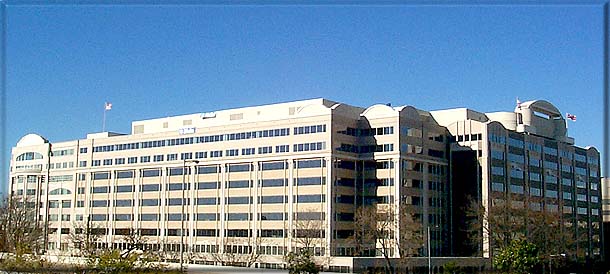FCC scheduled to vote April 23 on new rules for unlicensed use of 6 GHz
After taking fairly extensive public comment, the U.S. Federal Communications Commission at its April 23 open meeting will consider new rules that would open 1200 megahertz of the 6 GHz band for unlicensed operations. FCC Chairman Ajit Pai this week said he was “circulating draft rules” designed to allow unlicensed devices to share the spectrum with incumbent licensed users based on rules “that are crafted to protect those licensed services and to enable both unlicensed and licensed operations to thrive throughout the band.
Pai noted consumer use of Wi-Fi as well as projected increases in the use of Wi-Fi for mobile data offload in detailing his support for the move. “To accommodate that increase in Wi-Fi demand, the FCC is aiming to increase the supply of Wi-Fi spectrum with our boldest initiative yet: making the entire 6 GHz band available for unlicensed use,” he said in a statement. “By doing this, we would effectively increase the amount of spectrum available for Wi-Fi almost by a factor of five. This would be a huge benefit to consumers and innovators across the nation.”
As currently contemplated, 850 megahertz would go toward standard-power unlicensed use, and low-power, indoor unlicensed operation would be across all 1200 megahertz. According to Pai’s statement, “An automated frequency coordination system would prevent standard power access points from operating where they could cause interference to incumbent services.”
Here’s a variety of comments from a number of stakeholders across the telecom industry:
Mark Racek, Senior Director, Regulatory Policy at Ericsson, said in a statement, “Mid-band spectrum is critical for the U.S. to lead in the development of a robust 5G ecosystem. Other countries are far ahead of the U.S. in identifying and assigning licensed mid-band spectrum. Licensed spectrum in the upper 6 GHz band is necessary to ensure U.S. 5G leadership by facilitating new wireless applications and services beneficial to consumers and businesses. At the same time, Ericsson recognizes the need for a mix of both licensed and unlicensed spectrum and, therefore, urges the FCC to move ahead with opening the lower 6 GHz range for unlicensed use if incumbent users can be assured of protection from interference, and we request the FCC to seek additional comment on licensed use of spectrum in the 6 GHz band.”
From trade association CTIA’s EVP Brad Gillen: “We support the FCC’s efforts to make the lower half of the 6 GHz band available for unlicensed use and will continue to work closely with the commission to ensure rigorous protections for licensed services already existing in the band. While the FCC has done a remarkable job freeing up critical licensed spectrum for 5G, the United States faces a growing mid-band deficit. It is essential that the FCC and the administration develop a roadmap to close this deficit before moving forward with plans to give away the full 1200 MHz in the 6 GHz band and further limit our few remaining options.”
Intel EVP and GM of the Client Computing Group Gregory Bryant said in a statement, “Intel commends the FCC for opening the 6 GHz spectrum band for unlicensed operation, which will significantly improve Wi-Fi for all Americans. We deeply appreciate the efforts of FCC staff who have worked tirelessly assessing the complexities associated with the 6 GHz band, and eagerly await the FCC addressing this important topic at its April 23rd meeting.”
Derek Peterson, CTO of Boingo Wireless, said, “The expansion of Wi-Fi into the 6 GHz band provides exciting new real estate that lays the foundation for continued wireless innovation. The significant swath of contiguous spectrum is well suited to facilitate Wi-Fi’s skyrocketing growth, and will enable Boingo to maximize the benefits of neutral host Wi-Fi 6 deployments at major airports, stadiums, military bases and multifamily communities.”
CommScope CTO Morgan Kurk said, “Along with initiatives such as CBRS and C-Band, the Commission’s actions are providing the essential mid-band spectrum (licensed, unlicensed, and shared) that enable the U.S. to lead the transition into the 5G era. The wireless industry needs more spectrum to enable wider channel bandwidths which in turn will usher in the multi-gigabit age. This decisive move by the FCC will give Wi-Fi and other unlicensed services the capacity and capability to drive new and innovative applications. The current COVID-19 situation vividly illustrates how a high-bandwidth, high-reliability, highly accessible network is as critical as electricity to survive and thrive in society.”
Qualcomm CEO Steve Mollenkopf said in a statement, “Qualcomm fully supports the FCC’s plan to allocate the 6 GHz band for advanced unlicensed operations at its April 23rd meeting. We applaud FCC Chairman Pai and his fellow FCC Commissioners for this initiative, which will provide American consumers with better, faster broadband for so many uses, including telemedicine, remote learning and working, fully immersive augmented and virtual reality, & the Internet of Things. In February, we demonstrated a full suite of Wi Fi 6E products ready to start using this large new swath of spectrum. We are also optimizing other exciting new technologies for this large swath of spectrum, including the next version of 5G and next generation Wi-Fi. Today’s announcement is another important step taken by the FCC to ensuring American leadership in the key 21st Century enabling technologies.”
To get an idea of some of the objections to how the FCC is approaching 6 GHz, read the following:
-
Tech, Wi-Fi companies back broader unlicensed use at 6 GHz; public safety and utilities balk
-
Tech giants shred NAB research on unlicensed use of 6 GHz as ‘wildly inaccurate’

